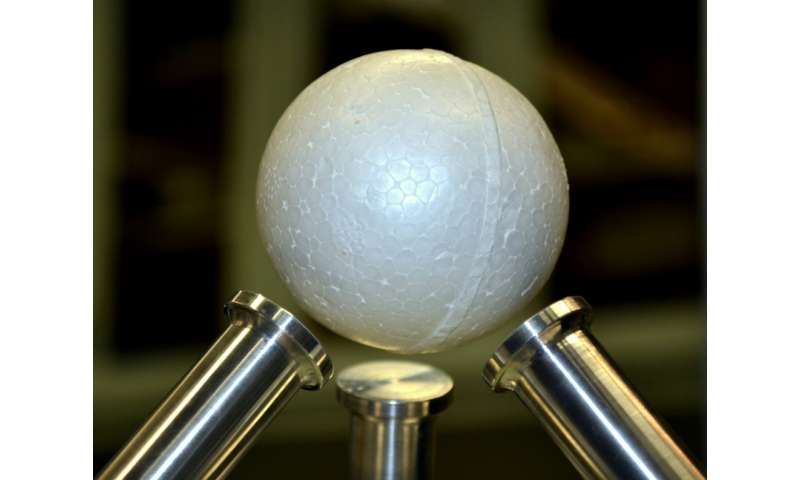Best of Last Week – Confirming the proton radius puzzle, chemtrails not real and a physics engine in the brain

(ScienceX)—It was another good week for physics as a large team of researchers took new measurements with a deuterium nucleus and confirmed that the proton radius puzzle is real—they found that the radius of a proton differed in size depending on what was orbiting it, conflicting with the Standard Model. Also a combined team of researchers from Russia, Germany and Italy found a new method for generating superstrong magnetic fields—based on the Faraday effect the new technique allows for generating a magnetic field of several giga-Gauss. And another team with members from Brazil and the U.K. demonstrated acoustic levitation of a large sphere—one of the first to do so with an object that was larger than the wavelength of the acoustic wave.
In space news, a team at NASA's Mars Science Laboratory celebrated Curiosity Rover's four years on the Red Planet by noting that the mission has disproved the old idea of Mars as a simple basaltic planet—instead evidence has been found of hydrogen, nitrogen, oxygen, sulphur, phosphorous and carbon, which are all of course, essential for supporting life. Also there were reports that researchers with the European Southern Observatory were planning to unveil a new Earth-like planet orbiting the star Proxima Centauri.
In other news, a team of atmospheric experts with Carnegie Science, the University of California Irvine, and the nonprofit organization Near Zero concluded that chemtrails are not real—some had suggested that a secret atmospheric spraying program has been carried out by governments or industry causing negative impacts on the environment. Also, a team of researchers with Queensland University of Technology captured the specific behavior of a coral as it was bleaching on video for the first time—showing how they react to ocean stress. And a team at The University of Manchester has conducted experiments that suggest a treatment option for Alzheimer's disease might be possible—they found that administering a common anti-inflammatory drug to mice reversed memory loss due to the condition. Also an international team of researchers used genetic testing to show that the textbook story of how humans populated America is biologically unviable—there would not have been anything to eat in the land bridge created when ice sheets began to recede, they report.
And finally, if you have ever had the sense that some part of your brain actually works out how to react to the physical world around you, you might be interested in a study at John's Hopkins University—they claim to have found the brain's 'physics engine' that predicts how the world behaves.
© 2016 ScienceX